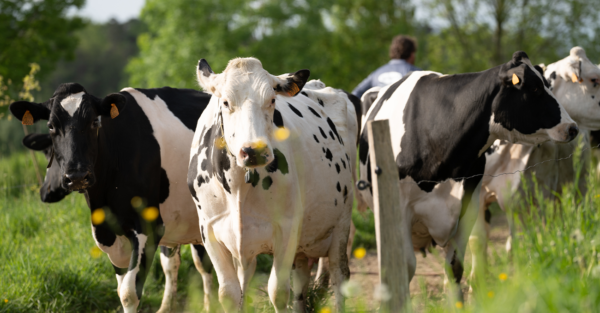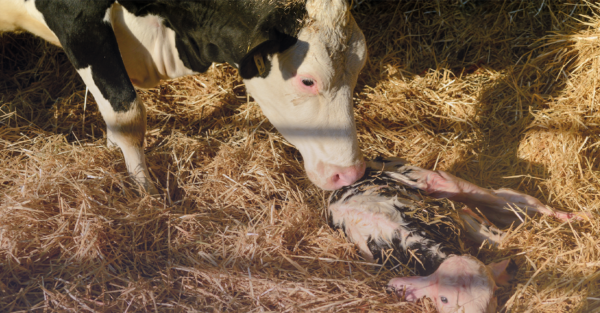Blog | Reading Time 3 minutes
Expert view: Dr. Frédérique Chaucheyras-Durand on the birth and evolution of a ruminant microbiota
What is the sequence of rumen microbiota establishment?
Colonization follows a very precise sequence, linked to the evolution of the rumen environment. At birth, the digestive tract is considered sterile. However, microbial establishment occurs immediately after birth, by inoculation through the dam vaginal canal, feces, and saliva. Rapid bacterial growth occurs even in the absence of a fermentable substrate. The first bacteria to settle change the environment by consuming desquamated rumen epithelial cells and oxygen, thus lowering the pH through VFA production. Then, ecological conditions are more suitable for colonization by strict anaerobes, which occurs progressively, with fiber-degrading bacteria, methanogenic Archaea, cellulolytic fungi, and finally, ciliate protozoa. Rumen maturity is considered as fully achieved when ciliate protozoa are established, at around two months of age.
Why rumen maturation is a challenge in the current rearing conditions?
It is clear that the dam plays a crucial role in the successful establishment of rumen microbiota as microbes are inoculated from birth from maternal sources. It has even been suggested, as it appears to be the case in monogastric animals and humans that some microbial colonization could occur before birth, through umbilical blood, placental membranes, or amniotic fluid. In ruminants, it is still a matter of scientific debate. However, there is no doubt the maternal imprinting process occurs for microbial transmission to the neonate.
It is also important to remember that rumen microbiota not only plays a key role in digestion and fermentation of the diet but through this activity it interacts with the host rumen wall. These interactions are of primary importance to rumen development and, thus, the digestion and absorption capacity of the epithelium as well as the barrier function of this tissue.
What are the consequences of poor rumen colonization on the future production of the adult ruminant?
As previously said, poor colonization of the rumen will first impact digestion and fermentation efficacy as the right functional microbiota will not be established properly. This will lead to poor rumen function, feed digestion and absorption, and thus individual variability in terms of feed degradability. New scientific evidence has shown that the microbiota is able to influence the rumen wall function as a physical barrier but also its role in immune modulation and defense. It has been shown that more than 20% of the variation in milk yield at first lactation can be directly associated with rumen development and growth performance in the first weeks of life. It is of high importance to take particular care during the first weeks of a calf’s life and to ensure rumen microbial maturation and development are optimized. This helps the calf get a good start after birth.
Published Oct 20, 2020 | Updated May 29, 2023
Related articles
Need specific information?
Talk to an expert



